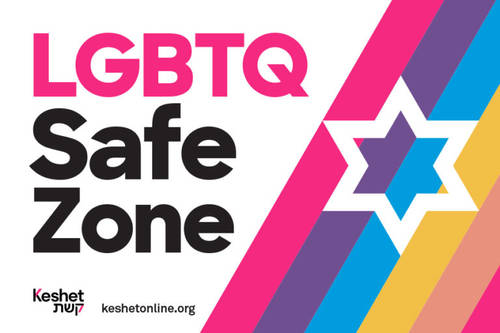Last Days of the Journey
by Rabbi Knopf
Wednesday, June 27, 2018
Turning from the ancient to the modern, Monday was a particularly heavy day: in the morning, we toured Yad Vashem, Israel’s national museum and memorial to the Holocaust and to acts of life-saving heroism during World War II. We were deeply moved by the experience (with perhaps one exception: at the end of the tour, one of our younger participants broke the tension by asking incredulously, “Have you ever done anything more boring in your life?!” Out of the mouths of babes, as they say). After a quick lunch at the museum cafe and a brief opportunity to debrief about Yad Vashem, we drove the short distance up the hill to Mt. Herzl, Israel’s national cemetery. The burial place of Theodor Herzl, many of Israel’s former Prime Ministers, fallen soldiers, and other important national figures, Mt. Herzl reminds us of the profound cost of Israel’s birth and continued existence, and the sacrifice required to make and keep this country what it is. We also stopped at the Herzl museum to learn a little bit more about the life of the ideological founder of the Jewish State and connect more deeply to his story.
Our serious day continued with a geopolitical tour of Jerusalem and its surrounding areas, learning about its history, about relations between its Jewish and Arab inhabitants, and about its place in the Israeli-Palestinian conflict. We examined the borders of Jerusalem after the War of Independence and how they changed following the Six Day War, and what those changing borders meant and continue to mean for Israelis and Arabs on all sides of the divide. We explored sensitive areas like Gilo, an Israeli neighborhood situated beyond the so-called “Green Line,” and toured the Security Barrier, discussing the difficult calculus Israel continues to make between freedom and equality for all the land’s inhabitants, securing a just final resolution to the conflict, and its own security. We looked out upon Palestinian cities in the West Bank like Bethlehem and Beit Jala, as well as Arab neighborhoods within Israel, discussing what Arab/Palestinian life looks like on either side of the divide. And we toured the Rachel border crossing, the only point near Bethlehem where West Bank Palestinians can cross over into Israel. Many noted that, whatever one’s views on the Israeli-Palestinian conflict, about what the relative costs and benefits are to the security barrier and restricted Palestinian travel, it is hard to deny that the Rachel border crossing is, on a purely human level, a painful place to visit, evoking, as it does in its concrete, barbed-wire, and chain-link construction, a prison of sorts, into which thousands of people have to crowd on a daily basis just to get to and from work, or to visit family, on the other side of the border. While there are certainly places around the world where human rights violations are more egregious, we learned about how Israelis across the political spectrum wrestle with the indignities Palestinians have to endure at crossings like this as a price of their security.
We ended the day at the Tayelet, a promenade near the new American embassy (another sensitive issue discussed on our tour) with stunning views of Jerusalem. We walked away with many questions, few answers, and an awareness of the complexities of the conflict between Israel and the Palestinians. Following such a long and emotional day, we welcomed an opportunity to unwind over dinner and drinks. About half of us feasted at Eucalyptus, and the other half at Adom, two of Jerusalem’s best restaurants.
Tuesday was an altogether different experience. Our tour first turned east, to an Israeli settlement in the West Bank where we had the unforgettable experience of riding camels. Some camels bore their new burdens with grace, while others were less than thrilled to have us riding on top of them. Fortunately, none of us got spit upon. In any event, we had a blast, even if riding 8 feet off the ground next to a giant desert cliff was, for many of us, a little unnerving. While there, we learned about the controversial nature of the location of our camel rides, as well as of the settlement enterprise altogether. Next, we turned south to visit Masada, the site of an ancient Herodian retreat that became the site of a final act of Jewish resistance against Roman rule. After learning about the extraordinary site, we took the cable car to the top of the mountain, and spent some time touring and learning about the ruins and their dramatic history. We paused to offer a blessing to our youth, that they continue to embrace the Jewish spirit of rebellion that animated our people from Abraham to Moses to the Maccabees to the zealots who stood their ground at Masada.
As anyone who has been there knows, Masada boasts incredible vistas and an unforgettable history. It’s also unbelievably hot, and underneath an unforgiving desert sun, so after a while atop the old fortress, we were ready to get back to some shade and air-conditioning. We descended via cable car, got on the bus, and headed to the Dead Sea resort Hod Hamidbar for a gourmet lunch, followed by a swim in the Dead Sea, and an afternoon lounging at the hotel’s various pools and jacuzzis. After a relaxing afternoon, we headed back to Jerusalem, taking in stunning views of the Dead Sea shore and rugged, mountainous desert landscapes along the way. It was a fun but exhausting day, so we took the opportunity to have a low-key evening, enjoying dinner in various spots around Jerusalem. After dinner, many in our group gathered on one of our hotel’s patios overlooking the Old City for a night-cap. We were surprised to be treated to a lively dress rehearsal for an upcoming concert taking place at a nearby outdoor venue, even rising, misty-eyed, for a stirring rendition of “Hatikvah.” Shortly after yet another “only in Israel” moment, it was time for bed. Our final day lay ahead.
A member of our group, April Williams, offers this reflection about our final day:
Our last day here in Jerusalem and Israel has been as equally action-packed as the others of this once-in-a-lifetime trip. We first had a tour at the Hand in Hand school of Jerusalem, a public school with campuses around the country and a mission to educate in both Arabic and Hebrew for Jewish and Arab elementary through high school age students…
This was a truly enlightening and inspiring stop, where we got to see an example of incredible work being done in Israel to build bridges and make peace. The school’s “ambassador,” Noa, taught us about public education in Israel, the segregation of Jews and Arabs in Israeli society, and about what the Hand in Hand schools are doing to facilitate coexistence. We wrestled with holding the truths of multiple narratives and the needs of multiple communities, while being uplifted to see new generations being taught to embrace each other and live together as brothers and sisters. Click here for more information on Hand in Hand.
Now, back to April:
After our visit to the school, we made our way to the Israel Museum. There we had an overview of a model of Jerusalem during the second temple period. The model was outside and it was hot. Some of us were sleeping under a tree and others listened patiently and with interest. We were then led to an air conditioned part of the museum called the Shrine of the Book that houses the Dead Sea scrolls. We finally were given some free time to explore the rest of the museum on our own. Our guide Shira recommended the archaeology exhibit and another guide-friend of Nancy’s recommended a modern art exhibit about Russian immigration to Israel. Needless to say, the place was huge and we could have spent all day there. Avner wanted to explore the archaeological exhibit, so we started there.
One thing you need to know about Avner is that he often collects rocks in places we visit. When we went to Caesarea, he found a few interesting rocks to take home. One of them had legs, resembling a short-legged dog. He showed me the rock and we deemed it an appropriate souvenir from our visit to the aqueduct.

Upon entering the archaeological exhibit at the Israel Museum, we encountered information about prehistoric development of humans. The exhibit progressed through the ages and included various tools, bones, and jewelry. One case held several “symbolic objects” from cultures that were felt to be in existence around 8000 years ago. Avner and I immediately recognized the form of a few of these stone animal figures as being similar to a rock he found in Caesarea!
Luckily, our guide Shira has  an archeologist friend who is going to examine the stone to determine whether or not it an ancient artifact. We’ll report back what we learn.
an archeologist friend who is going to examine the stone to determine whether or not it an ancient artifact. We’ll report back what we learn.
Our tour of the Israel Museum was memorable, and included stops at a scale model of Jerusalem in the 2nd Temple Period and the Shrine of the Book (which houses the Dead Sea Scrolls). But the museum has too many treasures to savor in one trip. So, we will look forward to seeing more on our next visit.
The Israel Museum was our last official stop on our tour, so our group broke up and spent a few hours having lunch, shopping, and packing up. We regrouped in the evening, loaded the bus, and went out for one final group feast, this time at the amazing Jerusalem restaurant Ha-chatzer. We ate, laughed, made toasts, and reminisced. Some of us even began to make plans for our next visit to Israel. And, with bellies full of hummus, steak, wine, and molten chocolate cake, we got back on the bus and headed for Ben Gurion airport.
I’ll let April have the last word:
In the meantime, we are all packed up and heading to the airport having learned much. I’m personally wondering how we’ll all process our adventures over the coming weeks. And withdraw from the hummus and halvah. 😔
To see more photos from our trip, click here.






